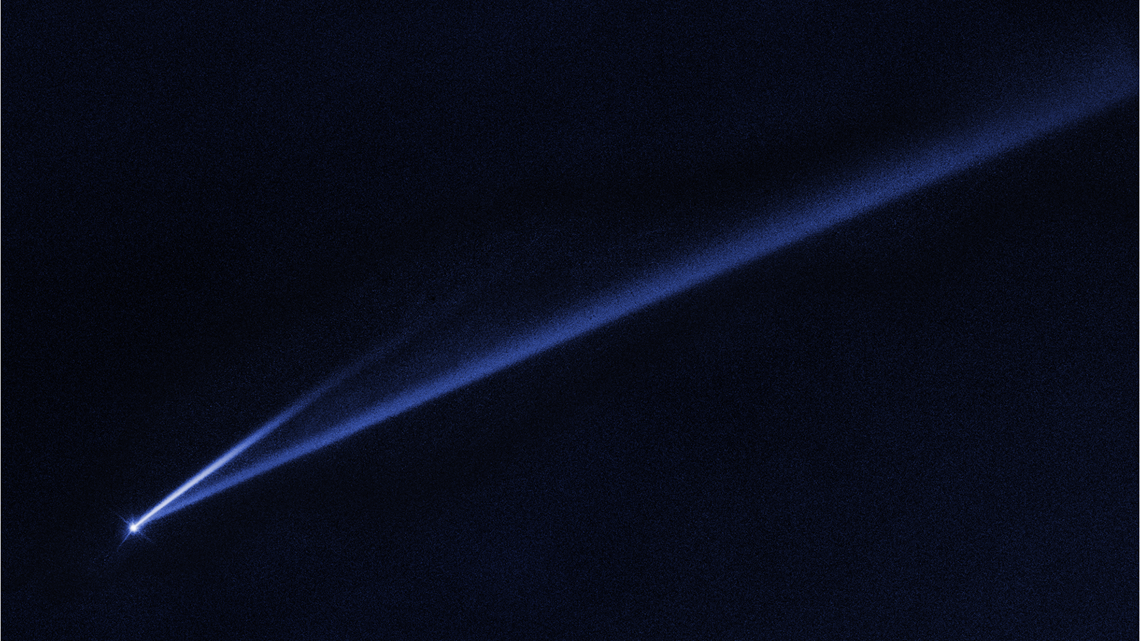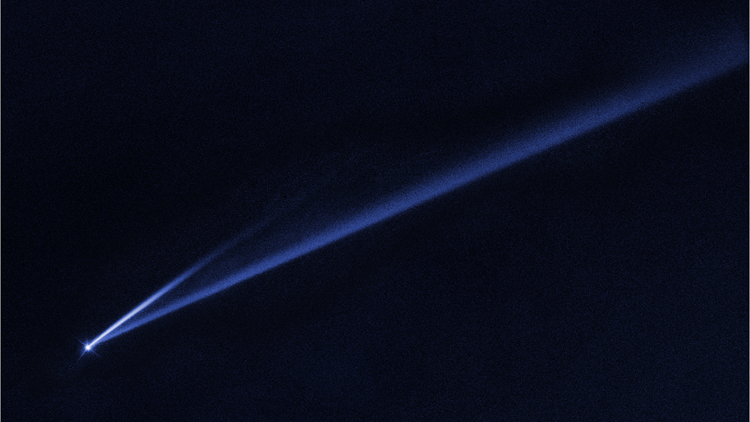The Hubble Space Telescope has captured images of a small asteroid that is spinning so fast, it is tearing itself to pieces.
According to NASA, the images "show two narrow, comet-like tails of dusty debris streaming from the asteroid Gault. Each tail represents an episode in which the asteroid gently shed its material — key evidence that Gault is beginning to come apart."
NASA said the debris tails are the first sign the 2.5-mile wide asteroid is disintegrating.
So why is it happening? Here's how NASA describes it.
"When sunlight heats an asteroid, infrared radiation escaping from its warmed surface carries off angular momentum as well as heat. This process creates a tiny torque that can cause the asteroid to continually spin faster. When the resulting centrifugal force starts to overcome gravity, the asteroid’s surface becomes unstable, and landslides may send dust and rubble drifting into space at a couple miles per hour, or the speed of a strolling human. The researchers estimate that Gault could have been slowly spinning up for more than 100 million years."




